
Significance: Varanasi is one of the oldest continuously inhabited
cities in the world and is considered the spiritual capital of India. It is
renowned for its ghats along the Ganges River, where pilgrims
perform rituals and cremations.
Highlights: Dashashwamedh Ghat, Kashi Vishwanath Temple,
Ganga Aarti ceremony.

Significance: Haridwar, situated at the foothills of the Himalayas, is
one of the seven holiest places in Hinduism. It is believed to be the
gateway to the abode of the gods.
Highlights: Har Ki Pauri ghat, Mansa Devi Temple, Ganga Aarti ceremony

Significance: Amritsar is home to the holiest shrine of Sikhism, the Golden Temple, making it a place of great spiritual and historical importance.
Highlights: Harmandir Sahib (Golden Temple), Langar (community kitchen), Jallianwala Bagh.

Significance: Known as the Yoga Capital of the World, Rishikesh is a spiritual hub nestled in the Himalayas. It is famous for its ashrams, yoga centers, and the Ganges River.
Highlights: Parmarth Niketan, Ram Jhula, Beatles Ashram, Triveni Ghat.

Significance: Bodh Gaya is where Lord Buddha attained enlightenment under the Bodhi Tree, making it one of the most important pilgrimage sites for Buddhists worldwide.
Highlights: Mahabodhi Temple, Bodhi Tree, Great Buddha Statue.

Significance: Tirupati is home to the ancient and richly adorned Venkateswara Temple, dedicated to Lord Vishnu. It is one of the wealthiest temples in India.
Highlights:Sri Venkateswara Temple, Tirumala Hills, Akasa Ganga waterfall.

Significance: Puri is famous for the Jagannath Temple, one of the Char Dham pilgrimage sites for Hindus. The temple hosts the annual Rath Yatra, attracting millions of devotees.
Highlights: Jagannath Temple, Puri Beach, Gundicha Temple

Significance: Talakadu is an ancient pilgrimage site on the banks of the Kaveri River. It is known for its submerged temples and sand dunes
Highlights: Vaidyanatheshwara Temple, Panchalinga Darshana, Gokarna Natheshwara Temple.

Kailasa Temple in Ellora Caves: Maharashtra, is another excellent choice. It’s a fascinating site that attracts foreigners for its unique and awe-inspiring architecture, but it remains less known among many Indians, especially those outside of the region.
Significance: The Kailasa Temple is part of the Ellora Caves, a UNESCO World Heritage site, and is a single monolithic rock excavation that was carved out of a single massive piece of rock. It is dedicated to Lord Shiva and is considered one of the most remarkable architectural achievements in India. The temple’s intricately detailed carvings, impressive size, and mystical aura make it a must-see for those interested in spiritual and architectural history.
Highlights: Despite its grandeur, it doesn’t have the same level of popularity among domestic tourists as more famous temples in India, making it a hidden gem for those seeking an off-the-beaten-path holy site.

Significance: Shirdi is the abode of the revered saint Sai Baba, whose shrine, the Shirdi Sai Baba Temple, attracts millions of devotees seeking his blessings.
Highlights: Shirdi Sai Baba Temple, Dwarkamai Mosque, Chavadi.

Significance: Mathura and Vrindavan are associated with the life and teachings of Lord Krishna, revered as the birthplace and childhood abode of Lord Krishna.
Highlights: Krishna Janmabhoomi Temple, Banke Bihari Temple, Prem Mandir.

Significance: Hampi is a UNESCO World Heritage Site known for its ancient ruins and temples, believed to be the site of the mythical Kishkindha, the kingdom of the monkey god Hanuman.
Highlights: Virupaksha Temple, Vittala Temple, Hanuman Temple.

Significance: Kedarnath and Badrinath are two of the Char Dham pilgrimage sites in the Himalayas, dedicated to Lord Shiva and Lord Vishnu, respectively.
Highlights: Kedarnath Temple, Badrinath Temple, Vasudhara Falls.

Significance: Vaishno Devi Temple is nestled in the Trikuta Mountains and is dedicated to the goddess Vaishno Devi, attracting numerous pilgrims.dh Gaya is where Lord Buddha attained enlightenment under the Bodhi Tree, making it one of the most important pilgrimage sites for Buddhists worldwide.
Highlights: Vaishno Devi Temple, Bhairon Temple, Ardhkuwari Cave.

Significance: Dwarka is believed to be the ancient kingdom of Lord Krishna and is home to the Dwarkadhish Temple, one of the Char Dham pilgrimage sites.
Highlights: Dwarkadhish Temple, Rukmini Devi Temple, Bet Dwarka.
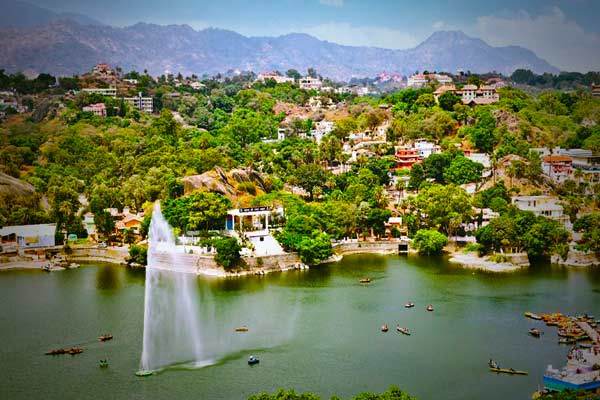
Significance: Mount Abu is the only hill station in Rajasthan and is considered a sacred place for Jains. It is home to the famous Dilwara Temples.
Highlights: Dilwara Temples, Nakki Lake, Guru Shikhar.
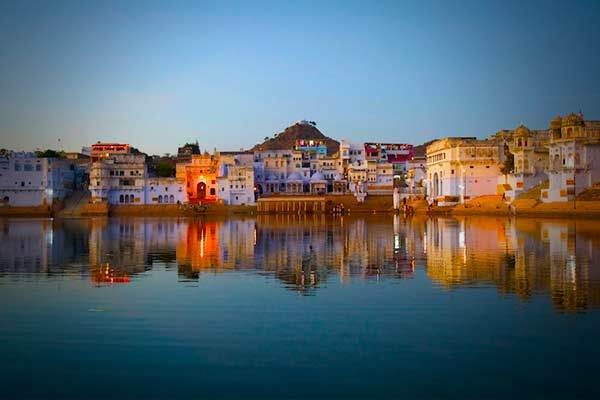
Significance: Pushkar is one of the oldest cities in India and is famous for the Pushkar Lake and the Brahma Temple. It is a significant pilgrimage site for Hindus.
Highlights: Pushkar Lake, Brahma Temple, Savitri Temple.

Significance: Madurai is known as the Temple City of India and is home to the Meenakshi Amman Temple, dedicated to Goddess Meenakshi.
Highlights: Meenakshi Amman Temple, Thirumalai Nayakkar Palace, Alagar Kovil.

Significance: Konark is famous for the Sun Temple, a UNESCO World Heritage Site dedicated to the Hindu sun god Surya. It is known for its intricate stone carvings.
Highlights: Konark Sun Temple, Chandrabhaga Beach, Konark Dance Festival.

Significance: Guruvayur is home to the Guruvayur Temple, one of the most important temples dedicated to Lord Krishna. It is known for its unique rituals and festivals.
Highlights: Guruvayur Temple, Elephant Sanctuary, Mammiyur Mahadeva Temple.

Significance: Gangotri and Yamunotri are two of the Char Dham pilgrimage sites and the sources of the Ganges and Yamuna rivers, respectively.
Highlights: Gangotri Temple, Yamunotri Temple, Gaumukh Glacier, Surya Kund.

Significance: Talakadu is an ancient pilgrimage site on the banks of the Kaveri River. It is known for its submerged temples and sand dunes.
Highlights: Vaidyanatheshwara Temple, Panchalinga Darshana, Gokarna Natheshwara Temple.

Significance: Champaner-Pavagadh Archaeological Park is a UNESCO World Heritage Site known for its historical and religious significance.
Highlights: Kalika Mata Temple, Jama Masjid, Pavagadh Fort, Saher Ki Masjid.

Significance: Chitrakoot is a sacred town associated with Lord Rama, Sita, and Lord Hanuman. It is mentioned in the Ramayana and is known for its natural beauty.
Highlights: Ramghat, Kamadgiri Parikrama, Hanuman Dhara, Sati Anusuya Temple.

Significance: Srisailam is home to the ancient Srisailam Mallikarjuna Temple, one of the twelve Jyotirlingas of Lord Shiva.
Highlights: Mallikarjuna Temple, Bhramaramba Devi Temple, Pathala Ganga.

Significance: Gokarna is a coastal town known for its temples and beaches. It is considered a sacred pilgrimage site for Hindus.
Highlights: Mahabaleshwar Temple, Om Beach, Kudle Beach, Gokarna Beach.

Significance: Halebidu and Belur are renowned for their Hoysala architecture and ancient temples dedicated to Hindu deities.
Highlights: Hoysaleswara Temple, Chennakesava Temple, Kedareshwara Temple, Yagachi Dam.

Significance: Tiruvannamalai is home to the Arunachaleswarar Temple, dedicated to Lord Shiva. It is considered one of the Pancha Bhoota Stalas.
Highlights: Arunachaleswarar Temple, Virupaksha Cave, Girivalam, Skandashramam.

Significance: The Dakshineswar Kali Temple is dedicated to Goddess Kali and is known for its association with Sri Ramakrishna Paramahamsa, a prominent mystic of the 19th century.
Highlights: Dakshineswar Kali Temple, Sri Ramakrishna Paramahamsa Devasthanam, Panchavati.
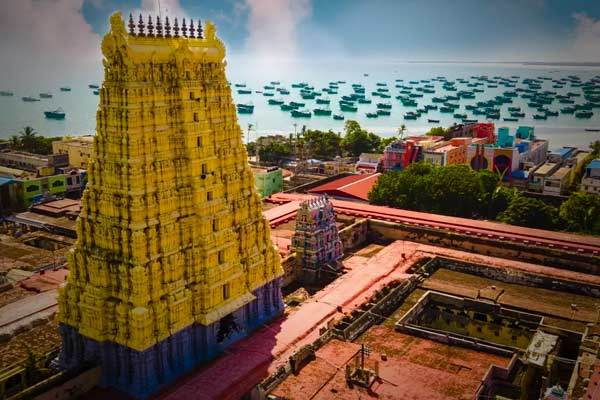
Significance: Rameswaram is one of the Char Dham pilgrimage sites and is famous for its Ramanathaswamy Temple and the sacred waters of Agni Theertham.
Highlights: Ramanathaswamy Temple, Agni Theertham, Dhanushkodi, Pamban Bridge.

Significance: Palitana is a major pilgrimage site for Jains and is renowned for its Shatrunjaya Hill, which hosts hundreds of Jain temples.
Highlights: Shatrunjaya Hill, Palitana Temples, Adinath Temple, Chaumukh Temple.

Significance: Kumbakonam is known as the “City of Temples” and is renowned for its numerous ancient temples dedicated to various Hindu deities.
Highlights: Sarangapani Temple, Kumbeshwarar Temple, Nageswaran Temple, Mahamaham Tank.

Significance: Srikalahasti is famous for its Srikalahasteeswara Temple, one of the Pancha Bhoota Sthalas dedicated to Lord Shiva as Vayu Lingam.
Highlights: Srikalahasteeswara Temple, Bhakta Kannappa Temple, Talakona Waterfalls.
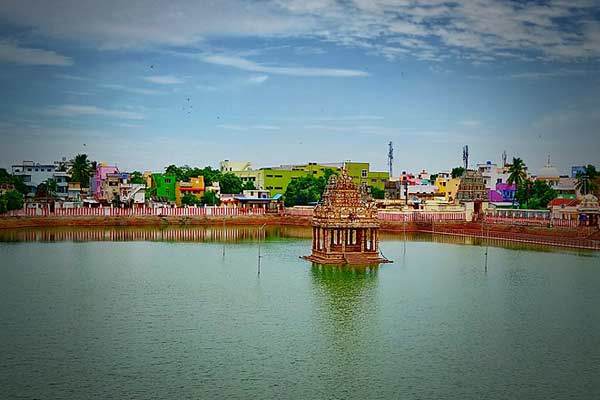
Significance: Tiruvallur is home to the Veeraraghava Perumal Temple, dedicated to Lord Vishnu, and is one of the 108 Divya Desams.
Highlights: Veeraraghava Perumal Temple, Tiruvallur Murugan Temple, Poondi Reservoir.
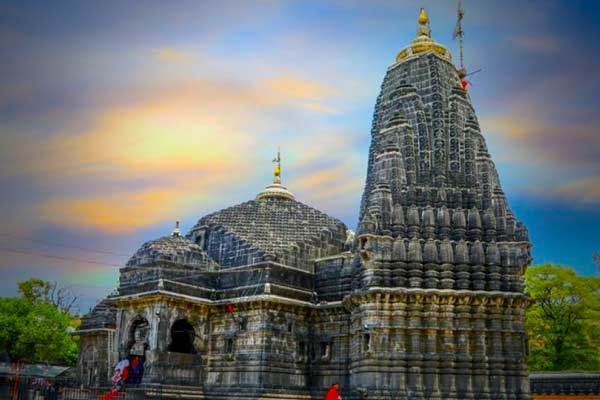
Significance: Trimbakeshwar is famous for the Trimbakeshwar Temple, one of the twelve Jyotirlingas of Lord Shiva, located near the source of the Godavari River.
Highlights: Trimbakeshwar Temple, Kushavarta Kund, Brahmagiri Hill.

Significance: Kalady is the birthplace of Adi Shankaracharya, the renowned philosopher and theologian, and is home to several temples and ashrams.
Highlights: Adi Shankara Keerthi Sthamba Mandapam, Sri Adi Shankara Keerthi Sthamba Mandapam, Sri Krishna Temple.

Significance: Sarnath is where Lord Buddha delivered his first sermon after attaining enlightenment, making it a major pilgrimage site for Buddhists.
Highlights: Dhamek Stupa, Mulagandha Kuti Vihara, Ashoka Pillar, Sarnath Museum.

Significance: Srirangapatna is known for the Ranganathaswamy Temple, dedicated to Lord Ranganatha, and is associated with the reign of Tipu Sultan.
Highlights: Ranganathaswamy Temple, Daria Daulat Bagh, Tipu Sultan’s Summer Palace.

Significance: Kanadukathan is known for its Chettinad mansions and the Karpaga Vinayakar Temple, dedicated to Lord Ganesha.
Highlights: Karpaga Vinayakar Temple, Chettinad Palace, Athangudi Palace.

Significance: Ratnagiri is a Buddhist pilgrimage site known for its ancient monastic ruins and sculptures, forming part of the Diamond Triangle of Odisha.
Highlights: Ratnagiri Buddhist Excavation, Udayagiri and Lalitgiri Monasteries, Ratnagiri Museum.

Significance: Guptkashi is known for the ancient Vishwanath Temple and its association with the Kedarnath pilgrimage route.
Highlights: Vishwanath Temple, Ardhnareshwar Temple, Manikarnik Kund.

Significance: Kanchipuram is one of the seven Moksha-puris in Hinduism and is renowned for its temples, silk sarees, and religious festivals.
Highlights: Kamakshi Amman Temple, Ekambareswarar Temple, Kailasanathar Temple.

Significance: Hemis is known for the Hemis Monastery, the largest and wealthiest monastery in Ladakh. It is famous for its annual Hemis Festival.
Highlights: Hemis Monastery, Hemis National Park, Gotsang Gompa.

Significance: Pandharpur is famous for the Vitthal Rukmini Temple, dedicated to Lord Vitthal (Vithoba), a form of Lord Krishna. It is a major pilgrimage site for devotees of Lord Vitthal.
Highlights: Vitthal Rukmini Temple, Pundalik Temple, Pundalik Kund.

Significance: Alandi is the resting place of the 13th-century saint-poet Sant Dnyaneshwar. It is a revered pilgrimage site for devotees of the Varkari sect.
Highlights: Sant Dnyaneshwar Samadhi Mandir, Changdev Maharaj Samadhi Mandir, Indrayani River.

Significance: Rajgir is an ancient city mentioned in Buddhist and Jain scriptures. It is known for its historical sites, hot springs, and religious significance.
Highlights: Gridhakuta Hill, Vishwa Shanti Stupa, Venu Vana, Ajatshatru Fort.

Significance: Ujjain is one of the seven Moksha-puris in Hinduism and is famous for its Kumbh Mela and the Mahakaleshwar Jyotirlinga Temple.
Highlights: Mahakaleshwar Temple, Kal Bhairav Temple, Ram Ghat, Kshipra River.

Significance: Kanyakumari is the southernmost tip of mainland India and is revered for its natural beauty and religious significance. It is a confluence of the Arabian Sea, the Bay of Bengal, and the Indian Ocean.
Highlights: Vivekananda Rock Memorial, Thiruvalluvar Statue, Kanyakumari Temple, Padmanabhapuram Palace.

Significance: Tiruttani is known for the Subramanya Swamy Temple, one of the six abodes of Lord Murugan. It is situated atop a hill and offers scenic views.
Highlights: Subramanya Swamy Temple, Swamimalai Hills, Kailasanathar Temple, Vallakkottai Murugan Temple.

Significance: Gangolihat is known for its ancient temples dedicated to various Hindu deities. It is situated amidst scenic Himalayan surroundings.
Highlights: Hat Kalika Temple, Vaishnavi Temple, Ambika Dewal Temple, Chamunda Temple.

Significance: Palani is famous for the Palani Murugan Temple, one of the Arupadaiveedu (six abodes of Lord Murugan). It is located atop a hill and is known for its pilgrimage trek.
Highlights: Palani Murugan Temple, Thiru Avinankudi Temple, Idumban Temple, Palani Hills Wildlife Sanctuary.

Significance: Mandu is known for its historical monuments, palaces, and mosques dating back to the medieval period. It has significant cultural and religious importance.
Highlights: Jahaz Mahal, Hindola Mahal, Rupmati’s Pavilion, Jami Masjid.

Significance: Thanjavur is known for its UNESCO World Heritage-listed Brihadeeswarar Temple, dedicated to Lord Shiva. It is a center of art, culture, and spirituality.
Highlights: Brihadeeswarar Temple, Thanjavur Palace, Gangaikonda Cholapuram, Airavatesvara Temple.

Significance: Nashik is one of the four locations where the Kumbh Mela is held. It is known for its ancient temples, holy ghats, and vineyards.
Highlights: Trimbakeshwar Temple, Muktidham Temple, Ramkund, Sita Gufa.

Significance: Chamundi Hills is home to the Chamundeshwari Temple, dedicated to Goddess Chamundeshwari, an incarnation of Goddess Durga. It offers panoramic views of Mysore city.
Highlights: Chamundeshwari Temple, Nandi Statue, Mahishasura Statue, Lalitha Mahal Palace.

Significance: Vaishali is an ancient city mentioned in Buddhist and Jain scriptures. It is known for its archaeological sites, including the Ashokan Pillar and the Buddha Stupa.
Highlights: Ashokan Pillar, Buddha Stupa, Vaishali Museum, Kundalpur.

Significance: Amarkantak is a pilgrimage town where the Vindhya and Satpura mountain ranges meet. It is revered as the source of the Narmada River and is considered a sacred place in Hinduism.
Highlights: Narmada Kund, Kapil Dhara, Sonmuda, Shri Yantra Mandir.
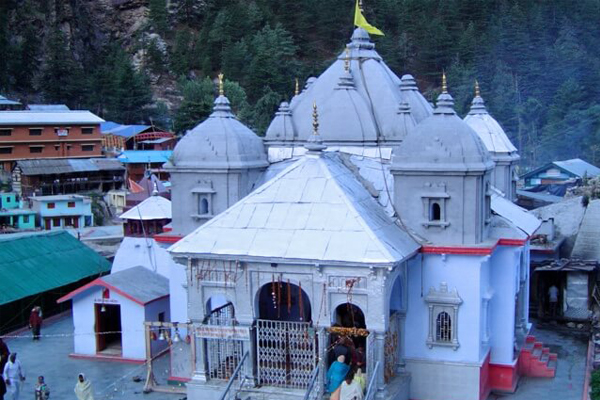
Significance: Gangotri is one of the Char Dham pilgrimage sites and is believed to be the origin of the Ganges River, which is considered sacred in Hinduism. It is dedicated to Goddess Ganga and attracts numerous pilgrims, especially during the Char Dham Yatra. The temple marks the spot where King Bhagirath is said to have brought the Ganges to earth to purify the ashes of his ancestors.
Highlights: Gangotri Temple, Bhagirath Shila, Gaumukh (the glacier from which the Ganges originates), and the scenic beauty of the surrounding Himalayan peaks.

Significance: Vrindavan is a sacred town in the Braj region, known for being the childhood home of Lord Krishna. The town is famous for its temples, ghats, and the rich history of Lord Krishna’s early life and divine leelas (pastimes). It is a key pilgrimage destination for followers of the Bhakti tradition.
Highlights: Banke Bihari Temple, ISKCON Temple, Prem Mandir, Yamuna River Ghats, Nidhivan, and the many temples dedicated to Lord Krishna and his consort Radha.
